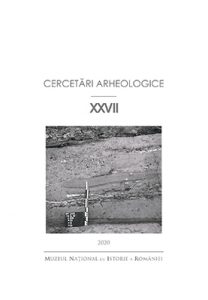On the Chalcolithic plant economy of the Hârşova-tell settlement (Romania): recent archaeobotanical results
On the Chalcolithic plant economy of the Hârşova-tell settlement (Romania): recent archaeobotanical results
Author(s): Roman Hovsepyan, Ramon Buxo Capdevila, Dragomir Nicolae PopoviciSubject(s): History, Archaeology
Published by: MUZEUL NAȚIONAL DE ISTORIE A ROMÂNIEI
Keywords: archaeobotany; Romania; Boian; Gumelniţa; Cernavodă; Chalcolithic; einkorn;
Summary/Abstract: Numerous remains of cultivated plants were recovered from the Boian, Gumelniţa and Cernavodă culture archaeological sediments of the Hârșova-tell, situated on the right bank of the Danube River. The archaeological stratigraphy here represents all Copper Age evolution in this region (Boian, Hamangia, Gumelniţa and Cernavodă I cultures (5th millennium BC)). These archaeobotanical findings give evidence that agriculture was an important direction of the agrarian economy of the local Chalcolithic population. The charred and in some cases mineralized archaeocarpological material recovered and investigated attests to the cultivation of several cereals and pulses: einkorn (Triticum monococcum), emmer (T. dicoccum), bread wheat (T. aestivum), spelt wheat (T. aestivum ssp. spelta), Timopheev’s wheat (Triticum timopheevii), naked barley (Hordeum vulgare var. nudum), lentil (Lens culinaris), bitter vetch (Vicia ervilia), and common pea (Pisum sativum). This assemblage of cultivated cereals and pulses, where hulled wheats, particularly einkorn, and naked barley prevail, is common for the Chalcolithic period of south-eastern Europe. A regular abundance of pulses is notable, as the cultivation of pulses drops somewhat in this period in the Near East and Caucasus. In addition to the cultivation of cereals and pulses, viticulture (or use of wild grape) was practiced. Edible fruits, nuts and seeds (maybe herbs as well?) were also gathered and consumed.
Journal: Cercetări Arheologice
- Issue Year: XXVII/2020
- Issue No: 1
- Page Range: 305-319
- Page Count: 15
- Language: English

